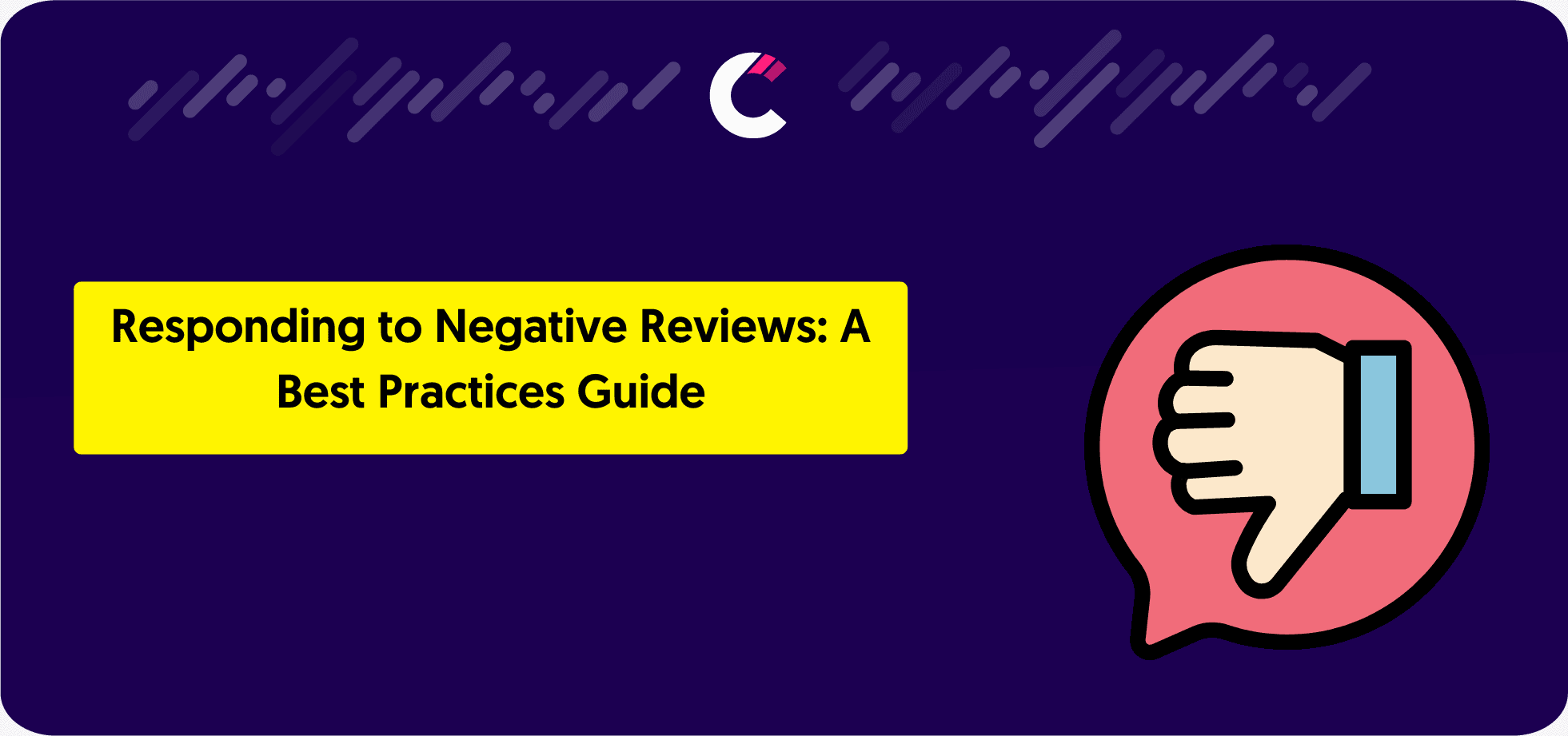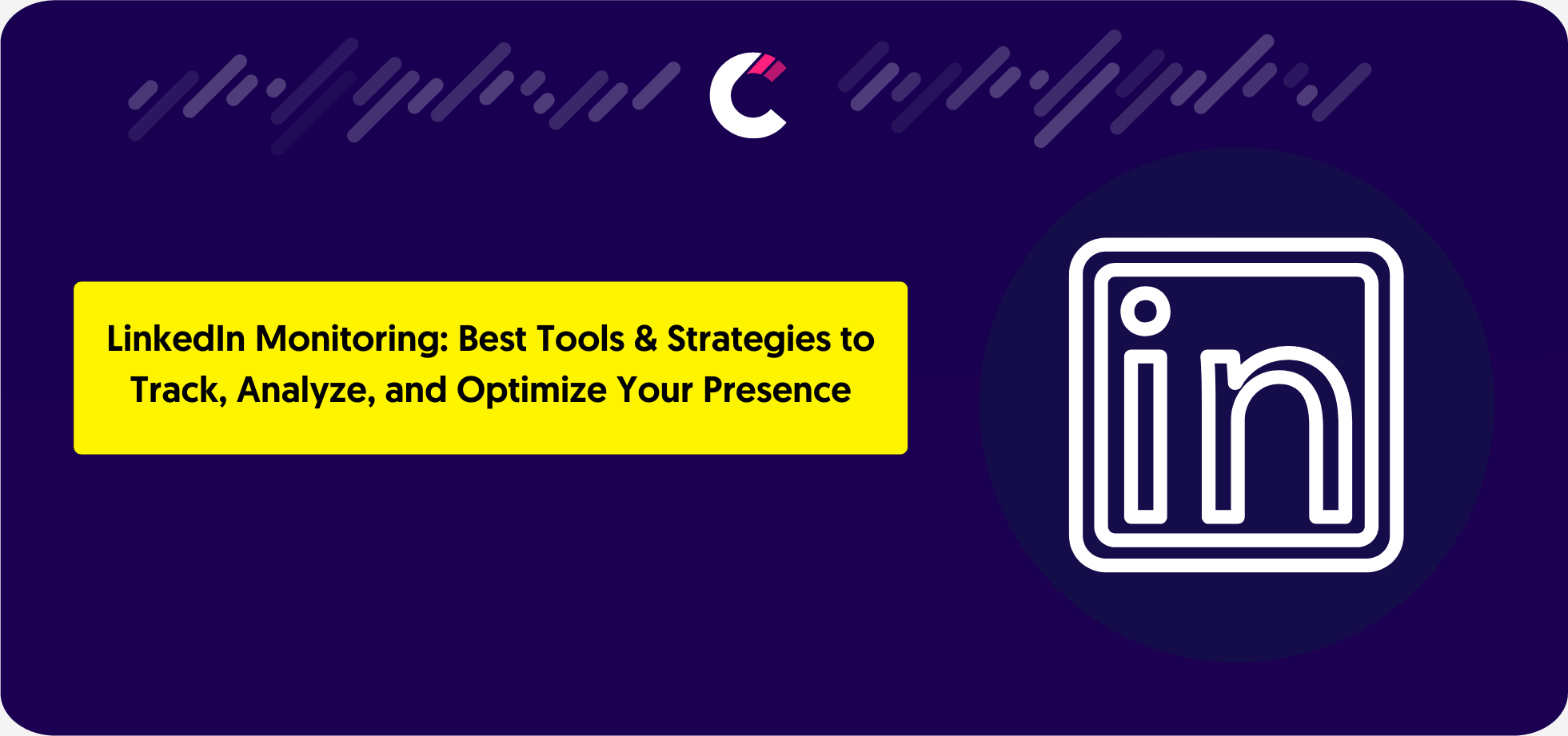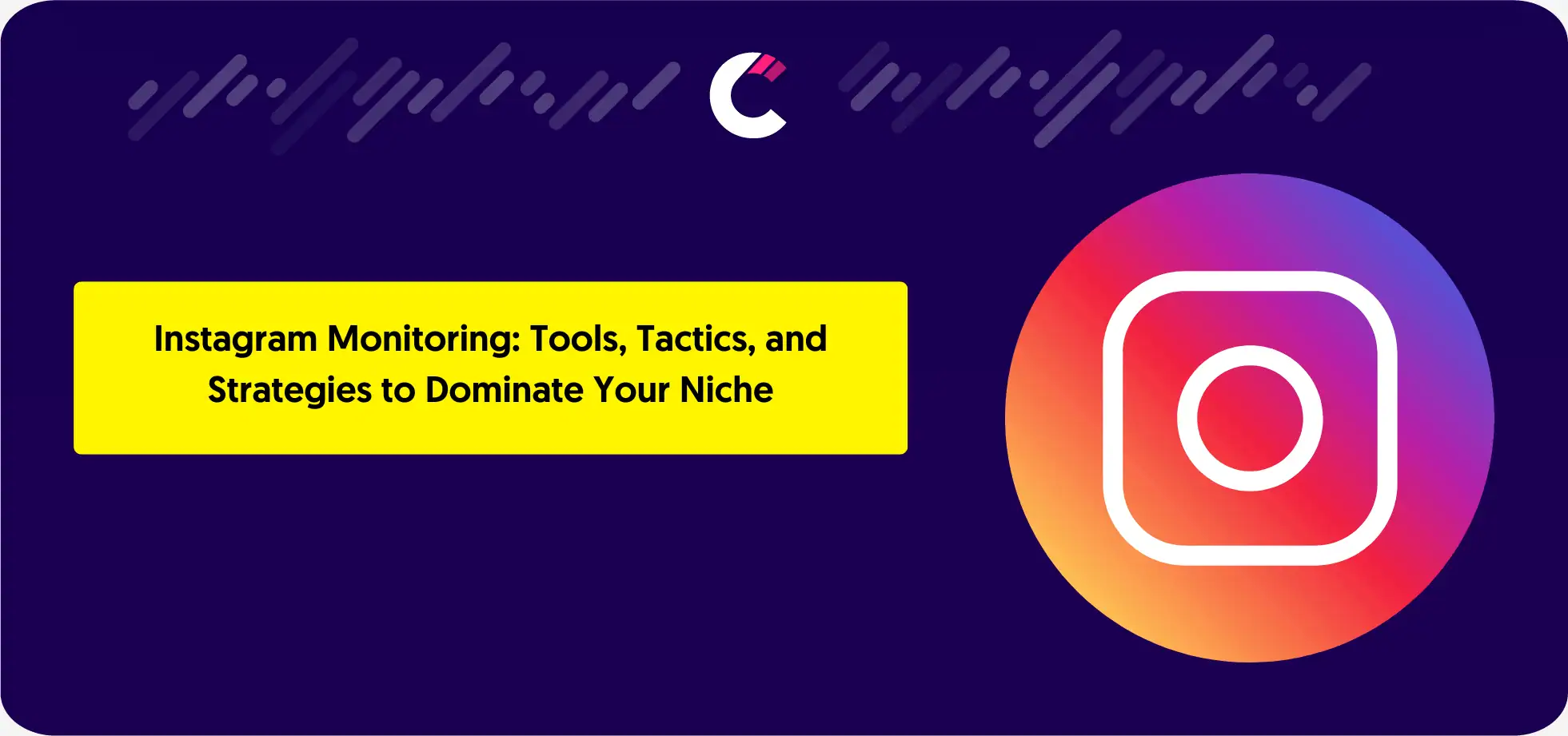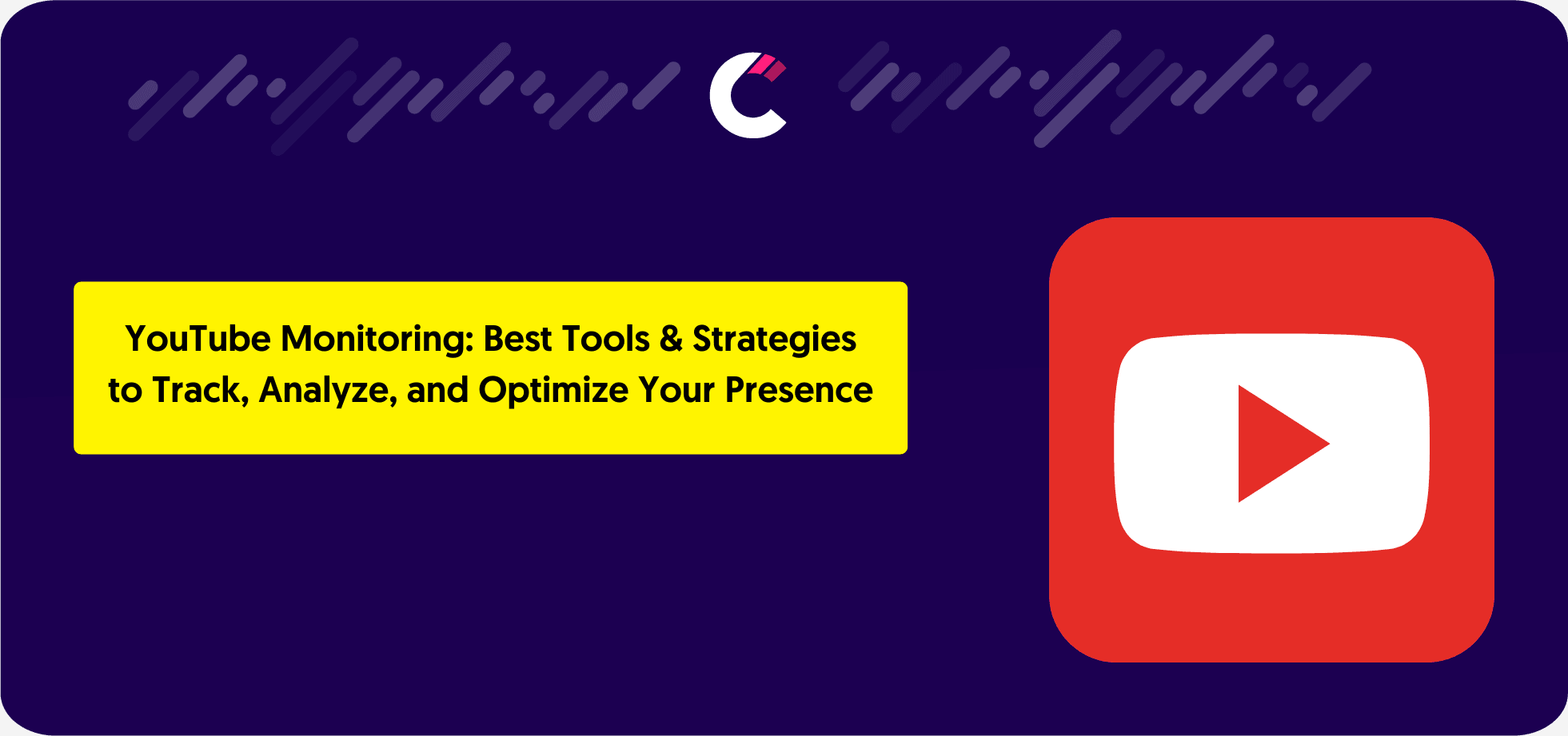Negative reviews can feel like a punch to the gut for any business. However, they are an inevitable part of operating in the public eye. When handled correctly, negative reviews can become an opportunity to demonstrate your commitment to customer satisfaction, build trust, and even win back unhappy customers.
This guide will walk you through the best practices for responding to negative reviews, turning potential setbacks into moments of growth.
Why Responding to Negative Reviews Matters
Ignoring negative reviews is never a good strategy. By addressing customer complaints, you not only show empathy and accountability but also build trust with both the reviewer and potential customers who read the review. According to research, 45% of consumers are more likely to visit a business that responds to its negative reviews. A thoughtful and professional response can:
- Rebuild the relationship with the dissatisfied customer.
- Demonstrate to other readers that your business values feedback.
- Offer insights into areas for improvement within your business.
- Turn an unhappy customer into a loyal advocate.
- Strengthen your overall brand reputation by showcasing transparency and responsibility.
Key Principles of Responding to Negative Reviews
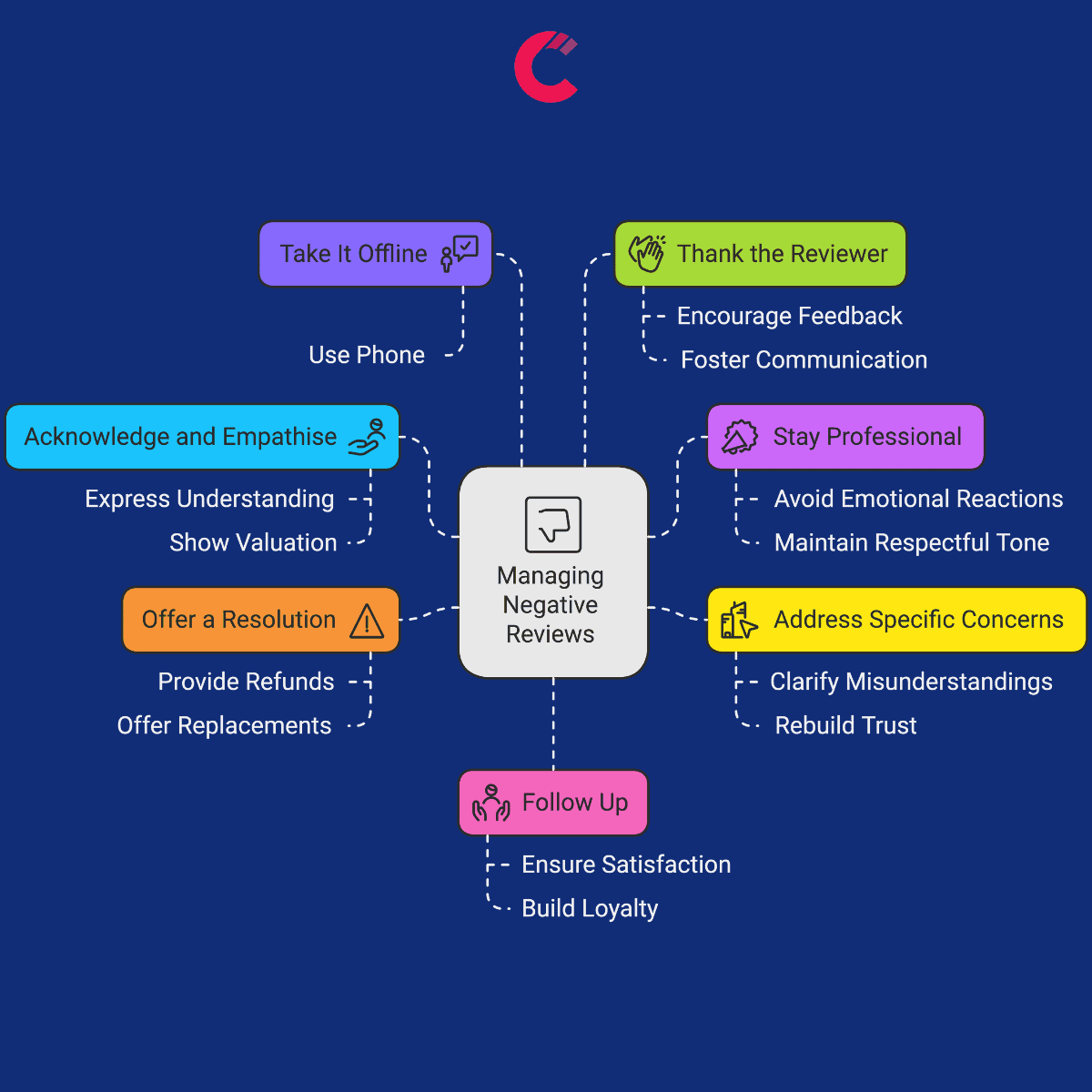
- Acknowledge and Empathise: Begin by acknowledging the customer’s concerns and empathising with their experience. A simple “We’re sorry to hear about your experience” goes a long way.
- Stay Professional: Avoid emotional or defensive responses, even if the review feels unfair. Maintain a tone of professionalism and courtesy at all times.
- Address Specific Concerns: If the review mentions specific issues, address them directly. This shows you’ve read and understood their complaint.
- Offer a Resolution: Provide a clear solution or next steps. Whether it’s a refund, a replacement, or further assistance, be proactive in resolving the issue.
- Take It Offline: Encourage the customer to continue the conversation privately via email or phone. This prevents unnecessary back-and-forth in a public forum and allows for a more personalised resolution.
- Thank the Reviewer: End your response by thanking the customer for their feedback. This demonstrates that you value their input, even if it’s critical.
- Follow Up: After resolving the issue, consider following up with the customer to ensure satisfaction. This small gesture can leave a lasting positive impression.
How to Write Effective Responses
Here is a step-by-step guide to crafting thoughtful and professional responses:
- Start with a Greeting: Address the reviewer by name (if available) to make the response feel personal.
- Acknowledge the Issue: Show that you’ve read their review and understand their concern.
- Example: “We’re sorry to hear about your experience with [specific issue].”
- Example: “We’re sorry to hear about your experience with [specific issue].”
- Apologise (If Applicable): Offer a sincere apology if your business is at fault.
- Example: “We deeply regret that we didn’t meet your expectations this time.”
- Example: “We deeply regret that we didn’t meet your expectations this time.”
- Provide a Solution: Explain how you’re addressing the issue or offer to rectify it.
- Example: “We’d like to make this right. Please contact us at [email] or [phone] so we can assist further.”
- Example: “We’d like to make this right. Please contact us at [email] or [phone] so we can assist further.”
- Thank Them: End with gratitude.
- Example: “Thank you for bringing this to our attention; your feedback helps us improve.”
- Example: “Thank you for bringing this to our attention; your feedback helps us improve.”
- Invite Future Engagement: Encourage the customer to continue sharing their thoughts to help you improve further.
- Example: “We’d love to hear more from you and work together to make your next experience better.”
- Start with a Greeting: Address the reviewer by name (if available) to make the response feel personal.
Common Mistakes to Avoid
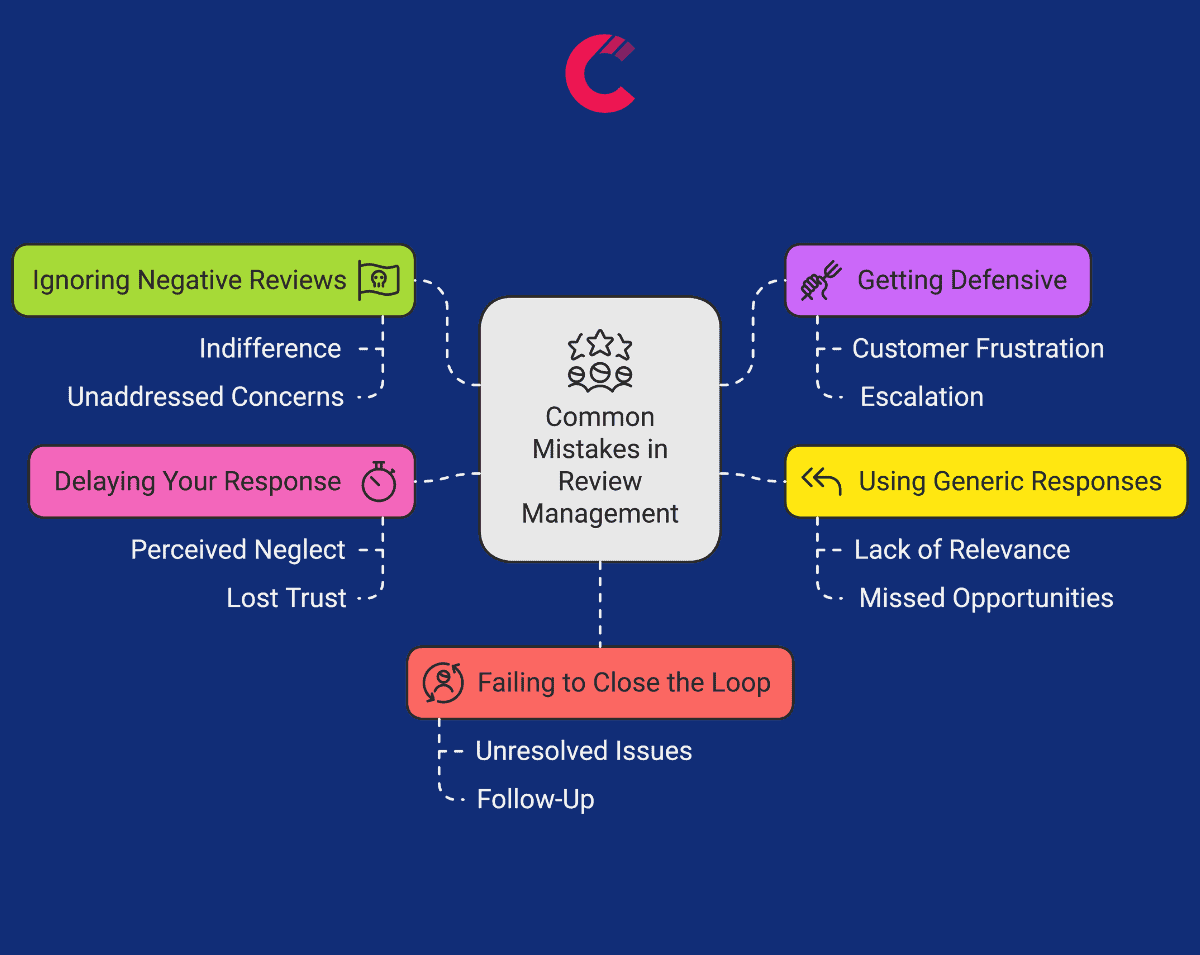
- Ignoring Negative Reviews: Silence can be interpreted as indifference. Always respond, even if it’s just to acknowledge the feedback.
- Getting Defensive: Avoid arguing with the customer or dismissing their concerns.
- Using Generic Responses: Tailor each response to the specific complaint; avoid copy-pasting generic replies.
- Delaying Your Response: Timeliness is critical. Aim to respond within 24-48 hours to show attentiveness.
- Failing to Close the Loop: Ensure that the customer’s issue is resolved, and follow up to confirm satisfaction.
Examples of Great Responses
Scenario 1: Service Issue
Reviewer: “The staff was rude, and my order was delayed by over 30 minutes.”
Response: “Hi [Name], we’re truly sorry to hear about your experience with our service. This is not the standard we strive to uphold. We’ve addressed this internally to ensure it doesn’t happen again. Please contact us at [email] so we can make this right. Thank you for your feedback.”
Scenario 2: Product Defect
Reviewer: “The item I received was defective and didn’t work as promised.”
Response: “Hi [Name], we’re sorry to hear about the defective item you received. We take this feedback seriously and would like to resolve this immediately. Please reach out to us at [email], and we’ll arrange a replacement or refund for you. Thank you for bringing this to our attention.”
Scenario 3: Miscommunication
Reviewer: “The product description was unclear, and I ended up ordering the wrong item.”
Response: “Hi [Name], we’re sorry for the confusion caused by our product description. We appreciate your feedback and have updated the listing to make it clearer. Please contact us at [email] so we can help resolve this for you. Thank you for helping us improve!”
Additional Tips for Success
For more comprehensive insights on managing reviews effectively, visit our detailed guide on Review Monitoring.
- Train Your Team: Ensure your customer service team is well-trained in handling online reviews with professionalism and care.
- Monitor Regularly: Use review monitoring tools to stay on top of new feedback across all platforms.
- Celebrate Positive Feedback: Don’t forget to acknowledge and share positive reviews to balance your online presence.
- Analyse Trends: Look for patterns in negative reviews to identify areas for long-term improvement.
Frequently Asked Questions (FAQ)
How quickly should I respond to a negative review?
Ideally, respond within 24-48 hours. Timely responses show customers that you’re attentive and value their feedback.
Should I apologise in every response to a negative review?
Not necessarily. If your business is at fault, a sincere apology is appropriate. However, if the review is unfair or mistaken, focus on clarifying the situation while remaining polite and professional.
What if the negative review is fake?
If you suspect a review is fake, report it to the platform immediately. Respond politely to indicate to readers that the review may be inaccurate, but avoid escalating the situation publicly.
Can responding to negative reviews actually help my business?
Yes, responding to negative reviews demonstrates accountability and a commitment to customer satisfaction, which can build trust with both the reviewer and potential customers.
How do I handle extremely angry reviewers?
Stay calm and professional. Acknowledge their frustration, address their concerns specifically, and offer to resolve the issue offline. Avoid engaging in an argument.
Should I respond to every single negative review?
Yes, responding to every negative review shows consistency and care. Even brief, thoughtful responses can make a big impact on customer perception.
What if the customer doesn’t reply to my resolution offer?
Do your best to resolve the issue based on the information provided. Your response will still demonstrate to others that you’re proactive and willing to help.
